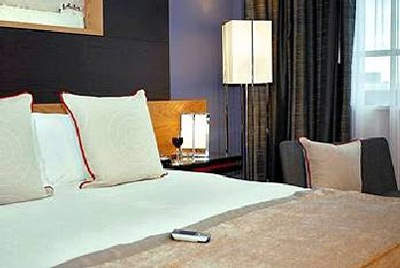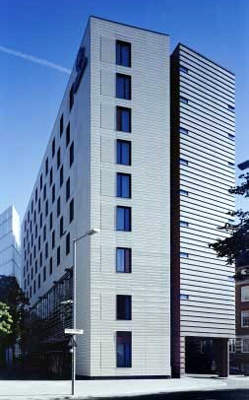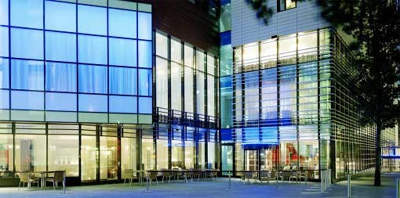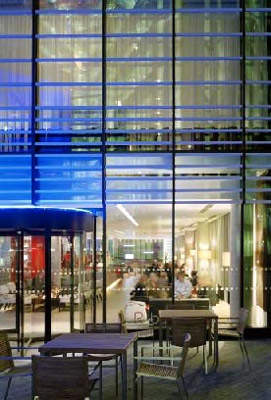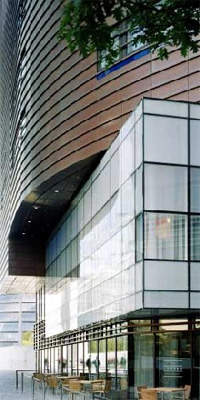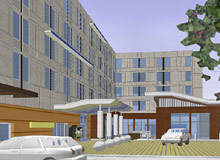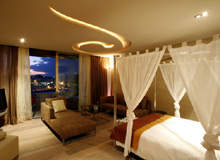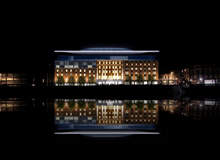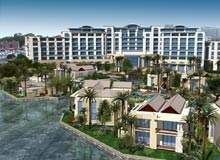The Hilton Tower Bridge in London is a new hotel development situated in the centre of the ‘More London’ development – a 13 acre business community on the south bank of the Thames. The 250 room hotel was opened in September 2006 and has had excellent reviews for its style, comfort and facilities. This hotel has a striking exterior architecture and a contemporary interior design, which with its central location in the capital will allow it to rapidly make its mark as a premier hotel for business and leisure
travellers.
The hotel has high speed internet access in every room as well as wireless broadband internet throughout the building. It also has an excellent fully equipped conference and business centre featuring audio/visual equipment, secretarial services, video conferencing, express mail services, executive lounge, nine meeting rooms and a host of other business friendly conveniences. The conference level has three business suites (Tower Suites A, B and C) with a combined floor space of 3,582ft², which can be hired separately or as one large space.
The rooms are decorated in a contemporary style using restful, calm pastel tones for the walls and also having large opening windows. The majority of rooms are equipped with 25in LCD televisions (on-demand movies) and reclining leather easy chairs for the traveller to unwind after business or touring. The hotel also has access to the More London 37º health and fitness club (gym facilities, cardiovascular centre and 20m swimming pool, sauna and steam room). It has its own cocktail bar (The Ruba) and a restaurant (The Larder) serving a variety of cuisines.
CONTRACTORS
The hotel was designed by the architects Jestico and Whiles, who were responsible for the combined task of the architecture, interior design and FFE specification. The quantity surveyor was E C Harris. The mechanical and electrical engineer was Roger Preston Partnership and the structural engineer was Adams Kara Taylor. The services cost consultant was Mott Green Wall and fire engineering was the responsibility of Roger Preston Partnership. The Lighting Design Partnership was responsible for lighting design and the planning consultants for the hotel were DP9.
The main contractor for the hotel construction was Bovis Lend Lease; the contract lasted 23 months from October 2004 (when construction started) to September 2006, when the hotel opened for the first time. The construction contact was valued at £34m. Sub-contractors included: for the cladding – GIG Fassadenbau; concrete – John Doyle; partitions and ceilings – BDL; joinery – Ruddy Joinery, M2 Construction; roofing – Briggs Roofing and Cladding Ltd; bathroom pods – Rasselstein; hard floor finishes – Harper and Edwards; signage – Rivermeade; lifts – Mitsubishi.
DESIGN AND CONSTRUCTION
The hotel was a very fast track project, with less than three years between the start of design to the opening. Design was started in October 2003, planning was applied for in March 2004 and following permission construction was started in October 2004.
The hotel construction used several modern methods of construction including unitised cladding, bathroom pods, pre-finished and pre-cast ‘twin wall’ structural party walls. The lower three floors (public areas with longer spans) are borne by a rigid ‘sway frame’ of in situ concrete. The upper floor bedroom levels are of egg crate form on a 4,200m module, made of ‘twin wall’ pre-cast walls and stiffening cores at north, south and central cores. The circular columns to lower levels were self-finished and cast using a method adopting polythene sheaths inside cardboard tubes.
The cladding of the building used unitised panels 1,400mm wide × 3,000mm high, which were pre-finished in an Austrian factory including windows, insulation and vapour barriers. The panels were clad in raw and extruded terracotta. The bathroom pods in the construction consisted of pre-finished concrete shells.
MORE LONDON
‘More London’ is on the south bank of the River Thames, immediately south-west of Tower Bridge in London stretching from Potter’s Fields adjacent to Tower Bridge and Hays Galleria and from the Thames to Tooley Street. The development includes the Greater London Authority building, a sunken elliptical outdoor terraced amphitheatre called ‘The Scoop’ (for organised theatre events), office blocks, retail units, cafes/restaurant bistros, and a pedestrian area paved with dark grey Irish limestone and with many contemporary open-air sculptures and water features, including fountains illuminated by brightly coloured lights.
There are frequently outdoor exhibitions and cultural events in ‘More London’, usually associated with the New City Hall. The masterplan design for ‘More London’ is based around a strong visual axis, or ‘Diagonal’ from the entrance to the site from Tooley Street, to the White Tower of Tower Bridge. The New Hilton, as part of ‘More’, has been encouraged for use as a public area and areas of the development such as the ‘Diagonal’ and ‘More London Place’ can be accessed from the hotel at ground level.
The hotel has fully glazed elevations to the surrounding areas and this maximises visual permeability and allows any activity within the hotel building to vitalise the spaces outside.
The building design consists of three interlinked curved ‘strips’, which mediate between the disparate contexts of the Tooley Street historic Conservation Area and More London’s contemporary towers, progressing from nine storeys on Tooley Street to thirteen storeys towards the waterfront. The project was designed to integrate leisure and entertainment with office space. The masterplan for ‘More London’ was by Foster Associates.


